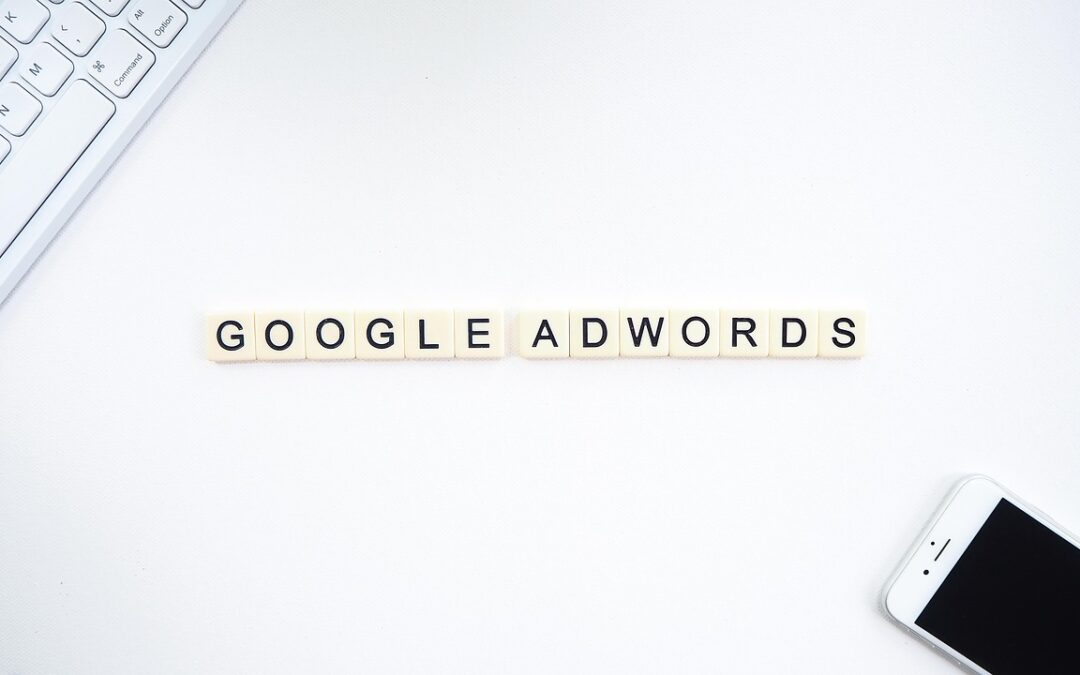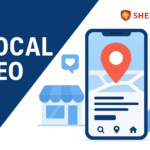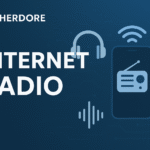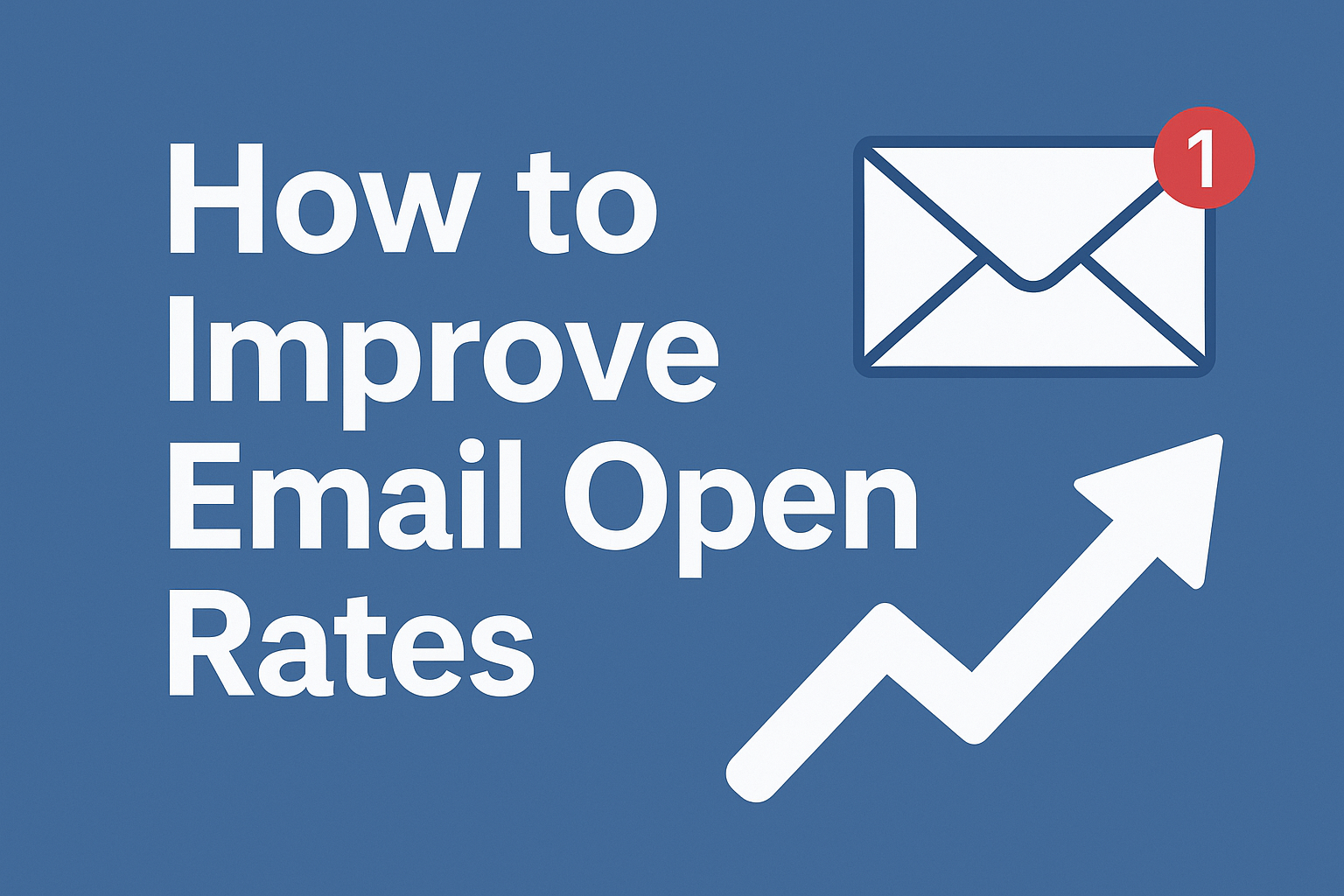Google Ads (formerly Google AdWords) is one of the most powerful advertising platforms for small businesses, offering targeted reach across Google Search, Display, Video, and other networks. In fact, Google cites an average return on ad spend of up to 800% ROI for advertisers. However, harnessing that power requires expertise. Setting up a Google Ads campaign involves many detailed steps – from keyword research and campaign structuring to writing ads, choosing bids, and tracking conversions. WordStream notes that Google Ads’ “amount of detail can be overwhelming, which can lead to mistakes or suboptimal strategies”. Many small businesses lack the time or knowledge to master each component, and mistakes can quickly waste budget. That’s why outsourcing to a specialist can be smarter than doing it alone. Sherdore.com, for example, positions itself as a dedicated AdWords management service. Its founder is a seasoned digital marketer who has helped “200+ businesses across the world” establish an online presence and revenue stream. By entrusting your Google AdWords setup to experts like SherDore, you leverage their experience, save time, and improve your chances of a high-performing campaign.
Keyword Research
Thorough keyword research is the first critical step in any Google Ads setup. You need to discover the search terms your potential customers actually use. Start with broad seed ideas (product names, categories, problem solutions, etc.) and then refine using Google’s Keyword Planner. Google describes Keyword Planner as “a free resource to help advertisers build keyword lists for search campaigns”, offering keyword ideas, search volumes, and bid estimates to refine your strategy. For example, a shoe store might enter “running shoes,” “basketball shoes,” and related terms into the planner to find volume and competition. As Google advises, always choose specific terms closely tied to your offering. For instance, Google gives the example of targeting an athletic shoe vendor with keywords like “men’s basketball shoes” rather than just “shoes”. Highly specific (“long-tail”) keywords tend to attract users with clear intent to buy.
That said, don’t go too narrow or too broad. Avoid ultra-generic terms (e.g. just “shoes” or “winter sale”) since Google warns these may match many unrelated searches and waste spend. Likewise, don’t limit yourself to only one phrase if similar high-volume queries exist. Use data to guide you: check search volume, competition, and related suggestions in Keyword Planner, and look at competitor ads for ideas (SherDore even includes “Competitor Analysis” in its setup package). If you serve local customers, add geography to your list (e.g. “Seattle running shoes”), or use Google’s location targeting (SherDore notes AdWords can target specific cities or regions).
After compiling an initial list, refine and expand it using best practices:
-
Group by intent and theme. Combine keywords by product or topic. For example, if you sell different types of widgets, create separate groups for “blue widgets” vs “red widgets”. Google explicitly recommends that you “group your keywords and ads into ad groups based on your products, services, or other categories.”. This keeps each ad group tightly focused and relevant.
-
Include negative keywords. Identify any terms that could trigger your ads but are not relevant (e.g. if you sell eyeglasses, you might exclude “wine glasses”). Google explains that negative keywords allow you to “focus on only the keywords that matter to your customers” and improve ROI. SherDore’s services list “Negative Keywords” as a deliverable, underscoring their importance. Regularly review search term reports and add any irrelevant queries as negatives.
-
Use a mix of match types. Broad match, phrase match, and exact match each have uses. WordStream advises “using a mix of match types, using broad match only in specific and intentional situations”. Broad match can discover new keywords (especially with Smart Bidding), but always monitor them and adjust. Phrase and exact match give more control over query alignment.
-
Leverage keyword research tools beyond Google. Consider tools like SEMrush, Ahrefs, or AnswerThePublic to uncover related and question-based keywords. Review competitors’ keyword targeting if data is available.
-
Localize and personalize. If you serve a local area, incorporate locations or city names. If your products have niche uses (e.g. “waterproof hiking shoes”), include those modifiers.
Finally, best practice is to keep your keyword list dynamic. Run your ads and frequently check which queries triggered impressions. Expand with new high-performing terms and prune underperformers or add them as negatives. As one marketing guide advises, conduct “search term audits as a habit” on a weekly or biweekly basis to catch “small leaks in your budget”. This iterative process ensures your campaign continually targets the most relevant, high-value keywords.
Campaign Structure and Types
With keywords defined, organize them into campaigns and ad groups. A Google Ads account typically has at least one campaign, each with its own budget, targeting settings, and campaign type (Search, Display, etc.). Campaigns should reflect your major goals or categories. For example, you might have separate campaigns for “Brand Awareness” vs. “Product Sales,” or campaigns segmented by product line (e.g. “Widgets – Online Sales” and “Widgets – Clearance”). Each campaign then contains ad groups dedicated to subsets of keywords (we’ll detail ad groups next).
Most small businesses start with Search campaigns, because they reach users actively searching on Google. In fact, one PPC expert observes that “a search campaign is usually the best type of campaign for most small businesses, because of its targeting power, customization options and high ROI potential”. Search campaigns show text ads on Google results pages when people enter your keywords. In these campaigns, you bid on keywords and your ads appear to users with matching search intent.
That said, Google Ads offers many campaign types to consider:
-
Search Campaigns: Text ads shown on Google search results. Ideal for capturing high-intent traffic. (See example below.)
-
Display Campaigns: Image or banner ads shown across Google’s Display Network of websites, apps, and Gmail. Useful for remarketing to past visitors and increasing general awareness.
-
Shopping Campaigns: For e-commerce businesses, Google Shopping ads display product images, prices, and store names directly in search results. Great for retail product promotion.
-
Video Campaigns: Ads on YouTube and video partner sites. Use for storytelling, brand awareness, or product demos.
-
Performance Max: A goal-based campaign type that uses Google AI to run ads across all of Google’s inventory (Search, Display, YouTube, Gmail, etc.) from one campaign. Google promotes Performance Max as a way to “access all Google Ads inventory from a single campaign” with automated Smart Bidding, making it simple to launch. Small advertisers can try PMax to reach audiences broadly with minimal setup, though it offers less manual control than traditional campaigns.
-
Remarketing (Acquisition & Audience): Not a separate campaign type, but remarketing can be done using Display or Search by targeting lists of past website visitors. It is one of the most effective ways to re-engage interested users.
Most small businesses will launch with a Search campaign and possibly a Display remarketing campaign. As you grow, you can add Shopping or Video as needed. Sherdore’s setup packages reflect this multi-type approach: for example, their Growth Plan supports up to 3 campaigns (search, display or remarketing), and their Pro Plan supports up to 5 campaigns across Search, Display, Shopping, and Remarketing.
Popular Campaign Types:
-
Search: Text ads on Google Search (high intent).
-
Display: Visual ads (banners, etc.) across millions of websites and apps.
-
Shopping: Product listing ads for e-commerce.
-
Video: YouTube and video partner ads for engagement.
-
Performance Max: All-in-one automated campaign across Google’s channels.
-
App/Local/Discovery: Other specialized types (e.g. app installs or local services) as relevant to your business.
Search campaigns display ads when users search Google. The screenshot above shows example search ads for “photo editing software.” Notice the sponsored links at the top of the results page (highlighted). These text ads are triggered by exact queries on Google – an advertiser only pays if someone clicks. Because of this precision targeting, well-structured search campaigns tend to deliver strong ROI for small businesses. Sherdore recommends focusing budget on Search campaigns early, since they target active buyers.
Display campaigns show ads on third-party sites and apps. The example above shows a banner ad on a news website. Display ads are more visually engaging but usually get lower click-through rates than search ads. They excel at re-engaging visitors (remarketing) or building brand awareness. Google’s Display Network spans tens of millions of placements, giving broad coverage. In Sherdore’s Pro Plan, they explicitly include Shopping and Remarketing campaign support to capture e-commerce and repeat traffic.
Ad Groups
Each campaign is divided into one or more ad groups. An ad group contains a tightly themed set of keywords and the ads that target them. Google’s own guidelines emphasize organizing ad groups by product or service category: “group your keywords and ads into ad groups based on your products, services, or other categories.”. For example, under a “Red Widgets” campaign, you might have one ad group for “red widgets – standard” with keywords [red widget], [red widget size L], etc., and another for “red widgets – premium”. Keeping keywords in a group closely related allows you to write ads that exactly match those searches.
Well-organized ad groups have measurable benefits. Jyll, a Google Ads coaching resource, notes that “well-organized ad groups with relevant keywords lead to higher click-through rates (CTRs), better Quality Scores, and ultimately, a lower cost per click.”. In other words, tight ad groups help Google view your ads as more relevant, which lowers costs and improves performance. As a rule of thumb, aim for 5–15 keywords per ad group. This range keeps the group focused but broad enough to gather sufficient data. If your account is very large, you might go above 15 in some cases, but small advertisers should err on the side of fewer keywords to maintain relevance.
Within each ad group, you create multiple ad variations. Each ad will use the ad group’s keywords (automatically highlighted when matching). You should customize ads to reflect the specific theme of the ad group. Sherdore’s setup explicitly includes building a “complete campaign structure & ad groups”, underscoring how critical this step is.
Ad Creation
Writing effective ads is both a science and an art. Your ads should clearly communicate your unique offer and encourage the user to take action. Google’s best practices suggest highlighting your “unique value propositions” – what makes your business or offer stand out. For example, if you have free shipping or a special discount, mention it in the headline or description. Always include a strong call-to-action. Google recommends concise action phrases like “Shop now,” “Buy today,” “Get a quote,” etc., which tell the user exactly what to do. Adding urgency or incentives can boost clicks: words like “today,” “now,” or mentioning a limited-time deal (e.g. “Offer ends on [date]”) can increase response.
To test what resonates, create multiple ad variations per ad group. As a rule, have at least 2–4 active ads running and rotate them. WordStream advises routinely testing ad copy by comparing key metrics (CTR, conversions) and iterating on the winners. For example, you might write two headlines (“50% Off All Shoes” vs. “Best Running Shoes on Sale”) and see which gets more clicks. Over time, optimize your ads by incorporating high-performing keywords into the text and refining the messaging.
Don’t forget ad extensions, which are free and can significantly improve visibility. Extensions add extra links and information (sitelink extensions, call buttons, location info, callouts, structured snippets, etc.). Sherdore’s services explicitly include setting up call, sitelink, and location extensions, reflecting the industry best practice of using extensions to make ads larger and more useful. For instance, a sitelink extension can link to specific product pages, while a call extension lets mobile users dial your business directly. These extensions improve CTR and give users more reasons to engage with your ad.
Bidding Strategies
How you bid determines who sees your ads and at what cost. The key is to align your bidding strategy with your campaign goals: clicks, conversions, or brand awareness. Google Ads offers both manual and automated bidding:
-
Manual CPC: You set the maximum cost-per-click for each keyword. Good when you want tight control over bids or when you have a small budget. If your goal is simply to drive traffic, this can work.
-
Smart Bidding (Automated): Google’s machine learning sets bids dynamically. Options include Target CPA (cost per acquisition), Target ROAS (return on ad spend), Maximize Conversions, and Maximize Conversion Value. These require conversion tracking but can greatly simplify bidding. As Google advises, “if you want customers to take a direct action on your site… and you’re using conversion tracking, then it may be best to focus on conversions. Smart Bidding lets you do that.”. Smart Bidding uses real-time signals (device, location, time, etc.) to adjust bids for each auction.
-
vCPM/CPM: For pure branding or awareness, you can pay per thousand impressions or views. For example, video ads often use CPV (cost per view) or CPM.
In practice, many small business advertisers start with a Smart Bidding strategy once enough conversion data is collected (e.g. Target CPA to meet your cost goal), because it automates the heavy lifting. If you do not yet have conversion tracking in place, you may start with manual CPC or Maximize Clicks until you do. Just remember to set realistic targets and budgets. WordStream cautions against underfunding your campaigns – you should “allocate enough budget to each campaign so Google can make your investment worth it.”. If a campaign is starved for budget or conversions, even the best bidding strategy will struggle.
Sherdore’s setup plans often include configuring the bid strategy. For example, their Growth Plan lists “Budget & Bid Strategy Optimization” as a feature. This means Sherdore helps choose the right strategy (manual vs. automated) and sets initial bids or targets. Over time, they will adjust bids based on performance data.
Conversion Tracking
None of the above matters if you can’t measure success. Conversion tracking is essential. It tells you which clicks are actually leading to sales or leads. WordStream defines conversion tracking as “the practice of keeping count of all the completed conversion actions you assign to your account, and which ads are responsible for them.”. In other words, you decide what counts as a conversion (a purchase, a form fill, a phone call, etc.) and then Google Ads tallies those actions. This data is crucial for evaluating ROI and optimizing campaigns.
To set up tracking, you typically place a Google Ads tag (or use Google Tag Manager) on your website’s conversion pages. When a visitor completes the action (e.g. reaches a “Thank You” page after checkout), the tag fires and reports back to Google Ads. Sherdore’s services explicitly include conversion tracking setup: their Growth Plan offers “Conversion Tracking + Tag Manager Setup”, and their Pro Plan includes “Conversion, Event, and Call Tracking”. By covering all bases (online events and phone calls), Sherdore ensures no leads are missed. You should do the same: track all meaningful actions. For example, if your business relies on phone inquiries, enable Google Ads call tracking; if you run an e-commerce site, count purchases.
Make sure the conversion actions you track align with your goals. As one guide emphasizes, set up conversion actions “that specifically impact your goals, like purchases and signups”, not just generic page views. Once tracking is live, you can also link Google Analytics to Google Ads for richer data (Sherdore notes they include “Google Analytics Integration”). With accurate tracking, you’ll know exactly which campaigns and keywords are producing revenue, enabling data-driven optimization.
Performance Optimization
A Google Ads campaign never truly “sets and forgets.” After launch, continuous optimization is required to maintain and improve performance. Start by monitoring key metrics daily or weekly: CTR (click-through rate), average CPC, conversion rate, and cost per conversion. Compare these against your goals. For any keywords or ads that underperform (low CTR, no conversions after significant spend), consider pausing or refining them.
Regularly review the Search Terms report to refine your keyword lists. This report shows the actual searches triggering your ads. Use it to find new high-performing long-tail keywords to add, and to spot irrelevant queries to add as negatives. Experts now often pair broad-match keywords with Smart Bidding to “discover hidden, high-converting search queries” – but only if you vigilantly add any bad matches to your negatives. As the same source advises, build a habit of “search term audits” weekly so you can catch any small budget leaks.
Test different ad variations over time. If one ad is clearly outperforming another, iterate on it or replace the loser with a new copy. Experiment with different calls-to-action, headlines, and even display URLs. Also, experiment with bidding adjustments (e.g. increase bids for high-converting keywords or pause bids during low-performance hours).
Use Google’s built-in recommendations cautiously. Google will often suggest fixes (e.g. adding keywords, pausing low-quality ads, raising budgets). Rather than auto-apply them, manually review each recommendation. As WordStream warns, don’t just auto-apply every suggestion; some may not fit your strategy. Only implement the ones that help your campaign objectives.
Finally, leverage targeting and bid adjustments. If you have demographic data, experiment with increasing bids for high-value age groups or locations. If you notice certain times of day or devices work better, adjust schedules or device bids. Google now even lets you layer audience signals on search campaigns, so consider adding remarketing lists or interest segments to your search campaigns for fine-tuned targeting.
Sherdore’s Pro Plan includes ongoing monitoring and optimization (15 days of active tweaks), which highlights how important continuous management is. Ideally, plan a weekly review of all campaigns to make gradual improvements.
Budget Management
Effective budget management goes hand-in-hand with optimization. Start by allocating your overall ad budget across campaigns in line with business priorities. Google Ads lets you set daily (or monthly average) budgets per campaign. As Sherdore points out, Google recommends aligning your budget to your goals – there’s “no strict minimum budget”; you should start with whatever suits your objectives. In practice, look at industry averages: small businesses often spend from a few hundred to a few thousand dollars per month on Google Ads.
Monitor spend closely. If a campaign is consistently under budget and meeting goals, you might raise its budget to capture more volume. Conversely, if a campaign is spending quickly without results, reduce or pause it. One key warning from experts is to avoid underfunding. As WordStream notes, you must “allocate enough budget to each campaign so Google can make your investment worth it”. Google’s machine learning needs sufficient data (impressions and conversions) to optimize bids – too small a budget can starve the algorithm of information.
Use Google’s budgeting tools where appropriate. Shared budgets can allocate one pool to multiple campaigns, but be cautious with shared budgets because one campaign can drain it. Automated rules or scripts can also help cap daily spend or reallocate budget at set performance thresholds. Ultimately, managing budget is an ongoing effort: adjust based on ROI and business goals. Sherdore’s setup considers budget guidance – for example, their FAQ even covers that you can target campaigns to specific geographies without a minimum spend – giving you flexibility to start small and scale as you see results.
Common Pitfalls & Best Practices
To summarize, here are some key pitfalls to avoid and best practices to follow during Google AdWords setup:
-
Define and track the right conversions. Don’t skip conversion tracking or track irrelevant events. Ensure you measure actions that align with your business goals.
-
Organize campaigns and ad groups logically. Group related keywords and ads together to improve relevance and Quality Score. A tightly themed structure means lower costs and higher CTR.
-
Write clear, compelling ads. Highlight unique offers and include a clear CTA. Test multiple ads and pause weak performers.
-
Use keyword match types wisely. Mix broad, phrase, and exact matches. Avoid relying on broad match alone, and keep negative keyword lists up to date.
-
Set appropriate bids and budgets. Choose a bidding strategy that matches your goals (e.g. Smart Bidding for conversions). Allocate sufficient budget so the campaign can gather data and optimize.
-
Monitor and optimize continuously. Regularly review search terms, ads, and performance metrics. Conduct weekly audits and implement improvements. Don’t auto-apply recommendations without review.
-
Leverage extensions and tracking. Use ad extensions (sitelinks, calls, location) to boost visibility, and ensure all valuable actions are tracked. Sherdore’s plans include these by default, which reflects their importance.
By following these best practices and avoiding common mistakes, you ensure that your Google Ads campaign is set up for success and poised to deliver a strong ROI.
Why Outsource Google Ads to Sherdore.com
Setting up Google Ads correctly is complex and time-consuming. For small business owners juggling multiple responsibilities, handing this task to a specialist can be a game-changer. Sherdore.com offers just that – full-service Google Ads setup and management tailored to small businesses. They bring proven expertise: their founder is a digital marketing professional who’s helped “200+ businesses” build online presence and revenue.
Sherdore’s service covers every aspect of the Google AdWords setup. According to their service descriptions, they perform in-depth keyword research, competitor analysis, campaign and ad group structuring, and ad copy creation with A/B testing. They also handle all technical configuration: linking Google Analytics, setting up conversion tracking (even call tracking), and adding ad extensions. Their Growth Plan includes conversion/tag manager setup and analytics integration, while the Pro Plan adds budget and bid strategy optimization, landing page recommendations, and 15 days of active campaign monitoring. In short, Sherdore does the intricate work that leads to an optimized, well-rounded campaign.
One big advantage is time: Sherdore’s FAQ notes that the typical setup can be completed in 1–3 days depending on complexity. This means your campaigns go live quickly without months of trial and error. It also means they can adjust and tune things in real time (the Pro Plan even provides weekly performance reports and two weeks of active tweaking). Sherdore understands small business budgets too; their information explains that there’s “no strict minimum budget” for Google Ads and that campaigns can be geo-targeted precisely, letting clients start small and scale up.
By outsourcing, you avoid common pitfalls and tap expert strategies from day one. Sherdore’s comprehensive approach ensures that each component – from keyword targeting to bid strategy – follows industry best practices. Ultimately, this leads to better ad performance and higher ROI. While many small businesses struggle to manage Google Ads in-house and end up wasting money or time, Sherdore’s clients benefit from a turnkey solution. They can focus on serving customers while Sherdore maximizes every click’s value. In a competitive online marketplace, having Google Ads experts in your corner can be the difference between mediocre results and a thriving ad campaign.
In conclusion, a successful Google AdWords setup requires meticulous attention to every detail: the right keywords, a logical account structure, compelling ads, smart bids, accurate tracking, and ongoing optimization. Done well, it can drive significant growth. Sherdore.com offers the specialized expertise to handle all these steps efficiently for small businesses. With Sherdore managing your Google Ads, you gain the advantage of professional campaign setup, save precious time, and greatly increase your chances of strong, sustainable ROI.









